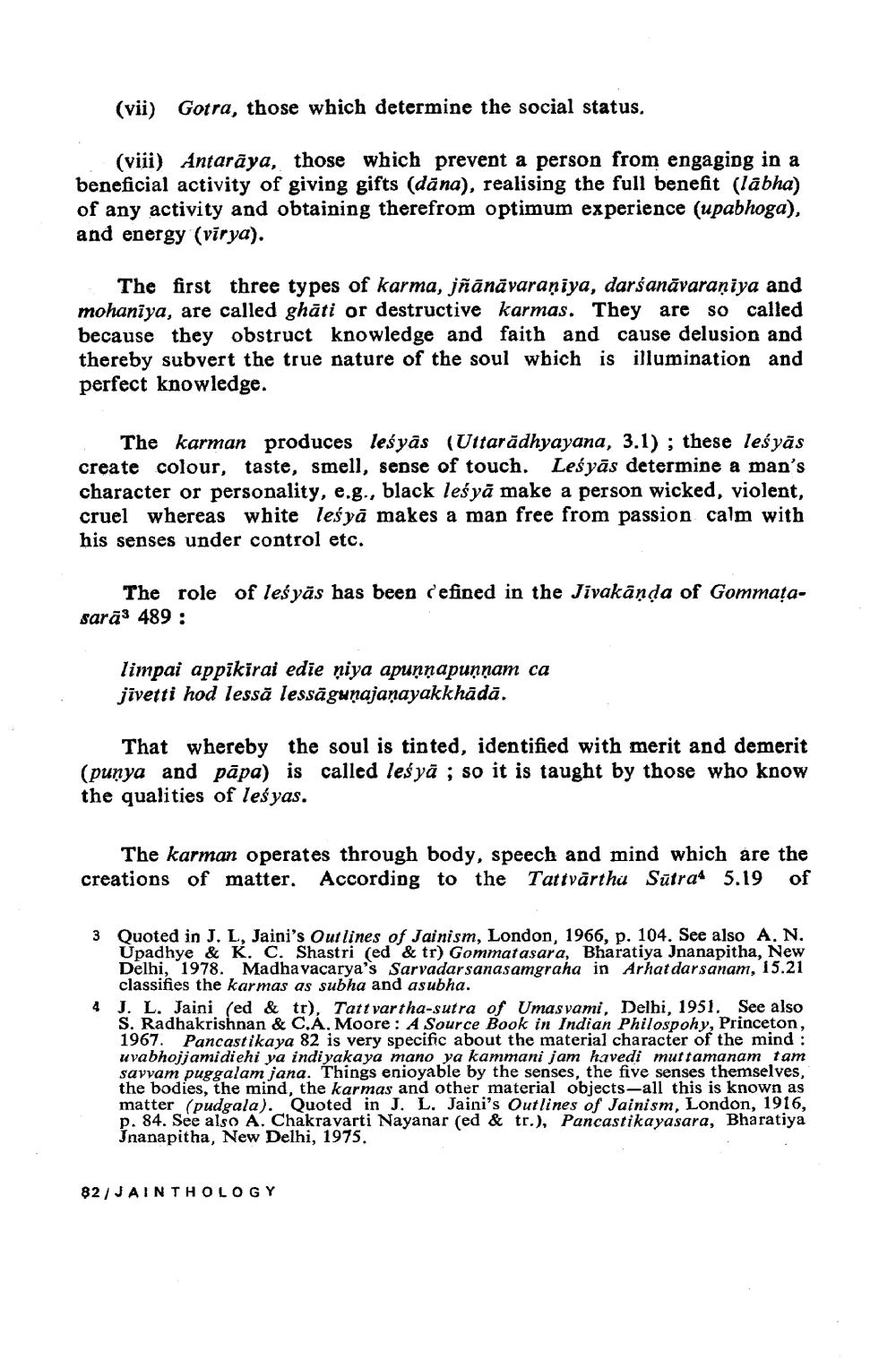________________
(vii) Gotra, those which determine the social status.
(viii) Antaraya, those which prevent a person from engaging in a beneficial activity of giving gifts (dāna), realising the full benefit (labha) of any activity and obtaining therefrom optimum experience (upabhoga), and energy (virya).
The first three types of karma, jñānävaraniya, darśanāvaraniya and mohaniya, are called ghāti or destructive karmas. They are so called because they obstruct knowledge and faith and cause delusion and thereby subvert the true nature of the soul which is illumination and perfect knowledge.
The karman produces leśyās (Uttarādhyayana, 3.1); these leśyās create colour, taste, smell, sense of touch. Leśyās determine a man's character or personality, e.g., black les yā make a person wicked, violent, cruel whereas white leśyā makes a man free from passion calm with his senses under control etc.
The role of leśyās has been defined in the Jivakända of Gommatasarās 489 :
limpai appikirai edie niya apunnapunnam ca jivetti hod lessā lessägunajanayakkhādā.
That whereby the soul is tinted, identified with merit and demerit (punya and pāpa) is called leśyā ; so it is taught by those who know the qualities of leśyas.
The karman operates through body, speech and mind which are the creations of matter. According to the Tattvārthu Sūtra4 5.19 of
3
Quoted in J. L, Jaini's Outlines of Jainism, London, 1966, p. 104. See also A. N. Upadhye & K. C. Shastri (ed & tr) Gommatasara, Bharatiya Jnanapitha, New Delhi, 1978. Madhavacarya's Sarvadarsanasamgraha in Arhat darsanam, 15.21 classifies the karmas as subha and asubha. J. L. Jaini (ed & tr), Tattvartha-sutra of Umas vami, Delhi, 1951. See also S. Radhakrishnan & C.A. Moore: A Source Book in Indian Philospohy, Princeton, 1967. Pancastikaya 82 is very specific about the material character of the mind : uvabhojjamidi ehi ya indi yakaya mano ya kammani jam havedi mut tamanam tam savvam puggalam jana. Things enioyable by the senses, the five senses themselves, the bodies, the mind, the karmas and other material objects-all this is known as matter (pudgala). Quoted in J. L. Jaini's Outlines of Jainism, London, 1916, p. 84. See also A Chakravarti Nayanar (ed & tr.), Pancastikayasara, Bharatiya Jnanapitha, New Delhi, 1975.
82 / JAINTHOLOGY




